[Editor’s Note: Robert Dannin, who as Magnum Editorial Director from 1985-90 knew and worked with Steve McCurry, emailed to me a private but substantial response to my June 1 post about the current brouhaha over McCurry’s use of Photoshop to revise some of his images. (In that post I mostly synopsized the situation and the responses thereto.)
Dannin’s email contained so much compressed information, provocative insider insight, and tart critique that I encouraged him to expand on it for publication here as a Guest Post. He did so, and the results appear below, as written. As always, the opinions of Guest Post invitees do not necessarily agree with mine, and often diverge radically from them.
As you’ll see, Dannin’s commentary raises more questions than it answers — about Magnum Photos and its members, about National Geographic, and about the picture-agency business and its relationship to periodicals, book publishers, and other licensees. So I invited him to fill in the blanks and expand further on these issues (basically taking him up on his “don’t ever get me started” dare). Dannin agreed, on condition that he first had to fulfill an outstanding editorial obligation. So we will begin that open-ended series in the fall. Consider this a foretaste of things to come at summer’s end. — A. D. C.]
•
June 4, 2016
Dear Allan,
I was very impressed by your timely and very important exposé of Capa’s D-Day photos. Deflating that myth was not only an exemplary piece of art historianship but also a public service that ought to resonate for years to come. Have you considered expanding it into a book? [Yes; it’s in the works. — A. D. C.] Publishers should be very interested, especially given Magnum’s new direction as a TV saga. (But how are they going persuade millennials to distinguish the brand from guns, ice cream, or condoms?)
Steve McCurry is another story altogether. Low-hanging fruit in the scheme of things. Not that calling him out is trivial, but his presence in Magnum was always highly contested. Members never considered him a peer, a true photojournalist, yet Bruno Barbey made a convincing argument circa 1985 about the value of retaining an in-house National Geographic connection. In exchange for the legitimacy conferred by the Magnum stamp on his work, Steve paid his dues without protest or any of the vulgar deceptions used by many others to shield their earnings while stealing precious services from the agency.
There were no illusions. It was a strategic bailout and smart response to the dramatic collapse of the magazine business. Steve was not only affable but accepted his liminal status cheerfully and very generously guided me through the labyrinth of National Geographic bureaucracy straight to the vault. Just ask Gilles Peress, who enjoyed a year’s vacation in South America and the Caribbean at the unprecedented rate of $500/day plus expenses without ever producing or even showing a single roll of exposed film. Or Bruce Davidson, who bragged about swindling the Geographic out of the price of an automobile on an assignment to illustrate the New York City coastline, a story that he later recycled into b&w prints for an unsuspecting editor at the New York Times Magazine.
 The amazing thing is that over the next couple of decades McCurry, Elliott Erwitt, and Martin Parr experienced such tremendous commercial success that they could afford to keep the agency afloat and still live comfortably. I don’t think anyone would mistake their work during that period for photojournalism.
The amazing thing is that over the next couple of decades McCurry, Elliott Erwitt, and Martin Parr experienced such tremendous commercial success that they could afford to keep the agency afloat and still live comfortably. I don’t think anyone would mistake their work during that period for photojournalism.
On the one hand, Steve had his fans at Magnum, the biggest one being Henri Cartier-Bresson, who appreciated his esthetic and once dismissed a McCurry detractor as “color blind.” On the other hand, McCurry did have a legitimate penchant for documentary photography. I featured some of his early work in Arms Against Fury, Magnum Photographers in Afghanistan (powerHouse, 2002). His infatuation with Afghanistan was real (the way it’s supposed to be), as were his pictures, in stark contrast to other photographic propaganda deployed in support of “Charlie Wilson’s War”: fake prisoners dressed in chains and handcuffs from a London sex shop, MSF [Médecins Sans Frontières] volunteer “physicians” demonstrating how to operate small-bore artillery, and any images to make the Russians and Afghan communists look absolutely demonic while our freedom-loving pals were busily organizing al-Qaeda.
Then came the Mona Lisa of refugee camps. Jackpot. For Steve, who says that part of the fortune he makes from this 20th-century La Joconde goes to a nonprofit foundation to educate Afghan refugees; it’s definitely something to investigate. For National Geographic especially, who for the measly price of an editorial assignment purchased a new corporate logo that, when ensconced in the publisher’s distinctive yellow frame, became an even more ubiquitous symbol than the actual photo. This was a clear misappropriation on moral, political, and financial grounds.
Morally, it was an act of exploitation, if not rape, by an American media giant as much a part of the Beltway establishment as the Smithsonian or Department of State. Politically, she fed the pornographic dreams of the White House neocon criminals prosecuting an illegal, stupid, treasonous, perpetual war. No wonder Steve hesitated over committing to the remake (until the magazine threatened to lasso her without him). Financially, it was theft of a photographer’s copyrighted editorial image for universal advertising rights and Cold War propaganda, without ever offering him a fair-market-price commercial buyout.
In this seedy act of expropriation National Geographic was simply following a business model established around the same time by HarperCollins. (See the Day in the Life series contracts for a true narrative of how authorial rights were nullified and photographers sentenced to become mere “content providers,” with the avid complicity of the world’s leading agents and magazine editors.) No longer even working in the industry but still a friend, I was outraged at this rip-off and pointed out that the magazine had trampled Steve’s usage rights — and even violated his subject’s human rights, by making her into a worldwide pinup girl. Given the imbalance of power, not to mention the difficulty in contractual renegotiations, I thought the state might have an interest in recuperating some lost tax revenues, and suggested Steve consult a seasoned litigator in the New York Attorney General’s office.
Imagine what mayhem ensued down on the Plantation (my term for the Geographic) when they got word that Steve had a lawyer with you-know “New York values.” His career would certainly have survived any threats to cut his assignments at the magazine, but whatever else transpired to force him to drop the issue could only have been in the vein of a career-ending exposé of what Steve had done for the Geographic — or, rather, what the Geographic habitually did to his images. Supremely ironic, therefore, to hear Steve’s former editors chirping innocently and tsk-tsking about the primitive Atari-level masking and dodging that was and is still commonplace. Always heartwarming, those displays of loyalty by editors and art directors whose greatest challenge is juggling deadlines and drinks.
While I might agree with some of Teju Cole’s remarks about the colonizer’s gaze, his shilling for the NY Times hardly makes a credible photography critic, more likely the very epitome of a corporate sellout. He knows nothing of McCurry, less about Magnum. He lacks basic knowledge on the industry’s division of labor, and seriously confounds possession of a camera with ownership of the means of production. It just shows how far an ingénue can go in a field that’s already crashed and burned. (In this case, I am the black box, the flight-data recorder.)
If McCurry or anyone else in the Geographic’s employ did something unethical from the perspective of the unwritten code of photojournalism, then the responsibility lies at the top with Gilbert Grosvenor and his gang – Wilbur Garrett, Tom Kennedy, Kent Kobersteen, and their flaks, who assented regularly to far more important transgressions, like sabotaging James Nachtwey’s coverage of the anti-apartheid struggle in South Africa (substituting in its place David Turnley’s soporific images), or the racial profiling of Eli Reed on the only assignment he ever shot by sending him to the most brutal dictatorship in the poorest nation on the “dark continent” (Malawi) and then criticizing his lack of access.
For me, anyway, the manipulation originates in the corporate boardroom — and damn the photographer who refuses to comply, because he or she is just replaceable. Why is Time “Lightbox” stoking gossip about McCurry while ignoring the biggest photography scandal in the history of their own magazine? Manipulation by Photoshop is nothing compared to the unacknowledged theft and destruction of Stuart Franklin’s slide of the “tank man” of Tiananmen Square from 1989. They should interview Michele Stephenson about that cover-up.
There’s much worse. I could go on to cite “dual-use photography” in the print media’s collaboration with the Contras to identify and target victims on the Honduras/Nicaragua border. How about the utter pandering to Chinese censorship across the whole industry? And don’t ever get me started on the agents and agencies who sank the profession for their own personal gain.
I am uncomfortable watching an interrogation that is misguided if related to some elusive standard of photojournalism. The supposed ethos at Magnum was cooperative effort: from each according to his ability, to each according to her needs. Even if no one really believed in the crackpot socialism of “Chim” [David Seymour, one of the four Magnum founders — A. D. C.] or Henri C-B, they stumbled through the motions anyway. When it was Steve’s turn, he picked the agency up and carried it on his back. He made my job a lot easier, and if the late Paul Gaucci, comptroller extraordinaire, could speak he’d attest to how those contributions helped slake the creditors and sustain the work of journalists like Leonard Freed and Larry Towell.
Philip Jones Griffiths, purest of the pure when it came to integrity of the image, never once ridiculed Steve’s work. Unlike the sniggering bloviators, famished for attention to the point of wasting money on a SoHo office we could ill afford, who would now eagerly strike a Faustian bargain to trade their lecture-circuit mediocrity for a chance at McCurry’s shuttling from the Hermitage to Pinacoteca di Brera to the Prado. Unlike Sebastião Salgado, who would fly to New York quarterly, march Gaucci to the bank, stuff the cash into his boots, then rush back to JFK. Heaven forbid the money should sit in our account long enough to balance our budget.
Pressing McCurry for explanations when one already knows the reasons he used Photoshop — to create a more saleable, viewable image — evades more serious issues about who controls photography, and when and how to liberate it.
— Robert Dannin
•
[Author’s note: As this op-ed suggests, I worked closely with McCurry during my tenure at Magnum from 1985 to 1990, and consider him both a colleague and a friend. Steve can be goofy at times, but he most certainly is not the enemy of committed photography. I am grateful to A. D. Coleman for publishing my views, and realize that I’ve opened up a can of worms in the process. Accordingly, I’ll have more to say about a number of these matters, about Magnum, and about the photo business as a whole in a series of Guest Posts that will start here this coming September. — R. D.]
•
Text copyright © 2016 by Robert Dannin. All rights reserved.
•
(For an index of links to all posts in this series, click here.)
•
Robert Dannin holds a doctorate in linguistics and anthropology from the School for Advanced Studies in the Social Sciences in Paris. He taught at Brown University, New York University, and Suffolk University in Boston. He is co-founder and director of the Ddora Foundation, and serves as a trustee at Mount Ida College in Newton, Mass. Among his scholarly publications, Black Pilgrimage to Islam (Oxford University Press, 2002) was the first ethnography of Islamic religious conversion in America.
In 2009 Dannin was awarded an inaugural residency at the Norman Mailer Writer’s Colony. His most recent work is a biography of Jacob Schiff, the Gilded Age banker and rival to J. P. Morgan.
Dannin paid for his education by working as a cook, translator, ghostwriter, and copywriter/photo editor at Sipa Press in Paris from 1978 to 1981. He was news editor for Sygma New York and later the editorial director of Magnum, where he produced Sebastião Salgado Jr.’s “An Archaeology of the Industrial Age,” eventually published as Workers (Aperture). His other editorial credits include James Nachtwey’s Inferno (Phaidon) and the survey Arms Against Fury: Magnum Photographers in Afghanistan (powerHouse).
Dannin is the author of numerous critical essays about photojournalism. From 1995 to 1997 he served as special consultant on photography to the office of the New York Attorney General. To contact Robert Dannin, click here.


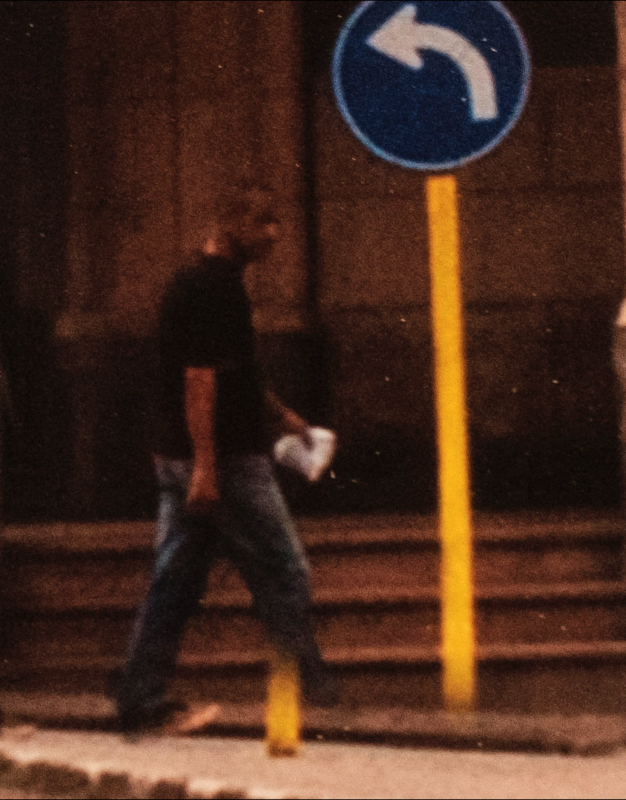
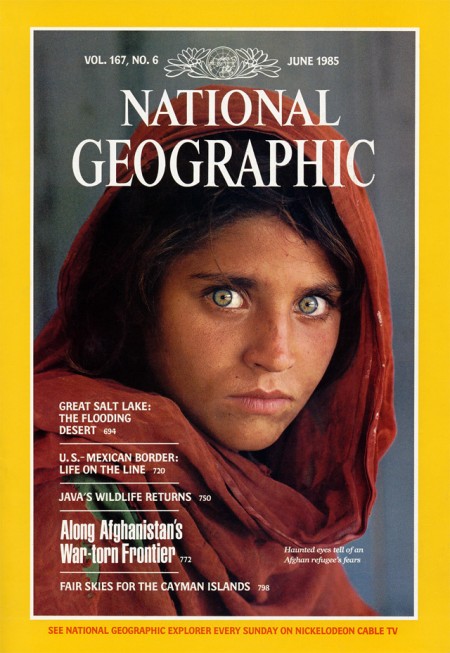
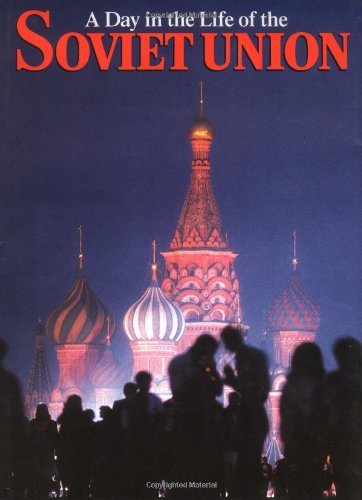
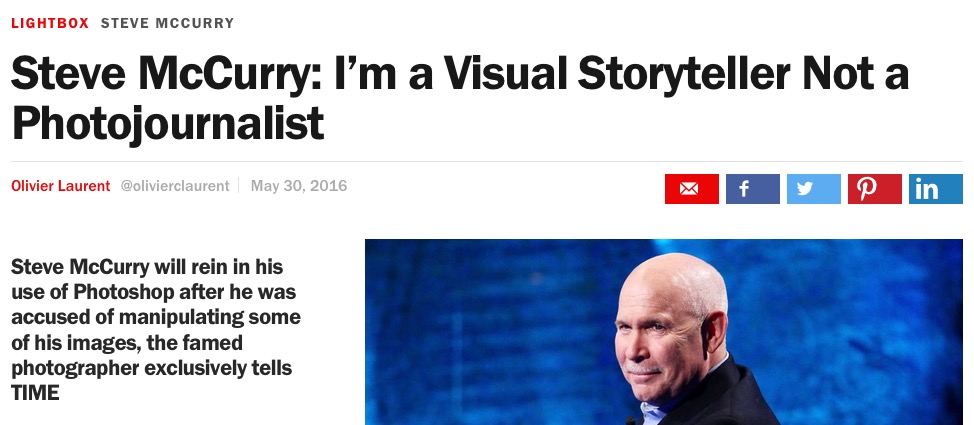
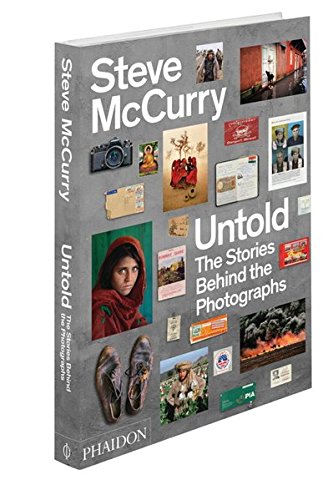

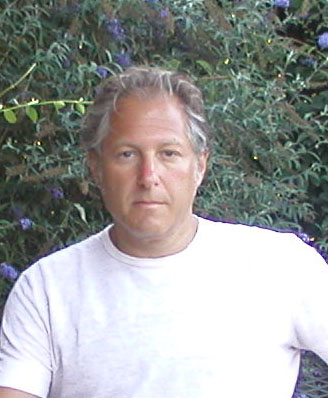




Allan,
F’ing Bravo on publishing Robert Dannin’s piece. September can’t come soon enough.
Regards,
Miles
Dear Allan,
I must say I got a scare when I saw your wrong post announcing the end of the Capa D-Day project … 🙂
The last (guest) post by R. Dannin was a very good one, brilliant even. Lots of dirty laundry going on or, as he put it, a can of worms has been opened but it was the right thing to do.
I had heard of internal “stories” at Magnum but reading of them from a first hand source like Robert was refreshing. Not because I thrive on disgrace but because the only risk of exposing it will be a chance to develop a better world.
If I recall correctly, Rupert Murdoch recently purchased the National Geographic. He does not own the foundation, just the publication and its enterprises. The slippery slope to the bottom is now secure.
Colleen Thornton
Thank you for publishing this piece by Robert Dannin. I’m looking forward to the sequel…
I recall sending in rolls of unprocessed film to my agencies (Sipa Press and Picture Group / Marcel Saba / Don Aboud) and to many magazines (such as Forbes, Fortune, Time, Newsweek, Businessweek and others) on assignments. Not once did the subject of manipulation of images ever come up.
Mind you, staging images was indeed always a question, but also never entered my own reality. Later that would change, but not whilst working as a photojournalist for what I always considered honest and ethical entities.
I must say, this article, (thank you A. D. C. and Mr. Dannin) for this insightful, honest and enlightening look into the reality of my life long profession and for helping ease some of the guilt I’ve often felt due to my own naiveté.
Dannin slays many sacred cows and BBQs them. A feast for the masses, those who actually do the work and often get the scraps. The chicanery goes way beyond some misuse of the Photoshop cloning tool, all the way to the top editors’ and DoP’s offices and even boardrooms. Well-done, and hats off to A. D. for posting it..
Fascinating. I would certainly like to read more about the real-life inside functioning of the photojournalism biz. I have few illusions, but I’m interested in the nuts and bolts of how corporate media do their dirty work.
Still, none of the shortcomings of the OTHER guilty actors in this sad drama diminish what McCurry did. He lied to his viewers about what kind of photography he was doing, then lied about lying, then blamed his assistant. Sorry, that’s really bad. There is a social contract between photojournalists and their audience; McCurry dishonestly violated that contract for career success. The article’s odd kudos to McCurry for his financial generosity to Magnum, it’s attempt to distract us away from McCurry’s own actions as a photographer and cultural celebrity, its detours into copyright piracy and its insults directed at McCurry’s critics don’t change any of that.
“If McCurry or anyone else in the Geographic’s employ did something unethical from the perspective of the unwritten code of photojournalism, then the responsibility lies at the top with Gilbert Grosvenor and his gang.” Really? I guess the ethical photojournalists I know must be fools.
What an absolute rant. A bitter insider, leaping onto the back of the McCurry scandal to throw vaguely worded (and terribly written) accusations at everyone he dislikes.
Note: Mr. Chapple submitted this comment under the name “Max Pearson” — byline of a noted senior British journalist — but using his own email address. Since I don’t allow anonymous or pseudonymous commentary at this blog, I’ve taken the liberty of approving its posting under the writer’s real name.
Fantastic. Looking forward to September.
“Why is Time “Lightbox” stoking gossip about McCurry while ignoring the biggest photography scandal in the history of their own magazine? Manipulation by Photoshop is nothing compared to the unacknowledged theft and destruction of Stuart Franklin’s slide of the “tank man” of Tiananmen Square from 1989. They should interview Michele Stephenson about that cover-up.”
Was it not LIFE magazine and not TIME magazine that lost Franklin’s original?
hi jim, it was time magazine, not life. bob
Hello Mr. Coleman,
Thank you for Robert Dannin’s guest post on the McCurry matter. That was an eye-opener. I think you might be interested in this piece, written before the McCurry story broke and focused on the prior wave of fretting over the ethics of photojournalism. Thanks.
https://medium.com/endless/new-media-manifesto-fe36f19457d0
-Peter Schafer
Fabulous article. Counting the days to September. Thank you for this honest, long overdue reality-check.
Corbis, Time, Time/Life, Life, Sygma and most other stock agencies “lost” millions of pictures. Some photographers who litigated or threatened to do so, were rewarded (in part) by many so called “lost” pictures being”found”. In the analog days this was a common practice and the passive photographer would rarely if ever recover all of his/her work product from the stock agency, archive or magazine unless he/she sued.
Several companies had written protocols in place for their employees to follow so as to avoid the return of images to photographers who requested them at the termination of their contracts.
I litigated these type cases countless times against various agencies, magazines, archives and the like until digital photography became the norm.
By failing to return images – especially to the estates of dead photographers – millions of images are now “owned” by various agencies, individuals and archives by virtue of their being abandoned. They license them and keep the entire fee or have simply sold them to others.
Really famous or profitable images are very, very rarely lost – rather they seem to get “misplaced”. In the 1980’s bar codes were ubiquitous. They were applied on the tops of ball point pens that sold for 6 – 9 cents. The stick on bar code on such a pen fit easily on the cardboard surrounding a chrome YET the major (and minor) agencies did not use them. A 10 cent box of nuts and bolts available at a local hardware store merited a bar code but valuable or potentially valuable imagery did not. The failure to use bar codes was just one method to retain images rather than return them upon request.
Kids call the practice, “accidentally on purpose” – so do judges.
“Morally, it was an act of exploitation, if not rape, by an American media giant as much a part of the Beltway establishment as the Smithsonian or Department of State.”
Rape is an actual thing and a crime. Appropriating it for hyperbolic use insults everyone who’s ever actually been raped.
I always marvel at the combination of bravado and cowardice that underlies this sort of rhetorical construction. The writer knows, of course, that it isn’t “rape” but gosh darn it, just can’t help himself from trying to wedge it into the sentence somehow.
Should anyone call him on it, he’s left himself the out that he really didn’t explicitly say it was rape, you know.
Bravo. Period.
Great Minds Discuss Ideas; Average Minds Discuss Events; Small Minds Discuss People
The original source of this advice? Mid-19th-century handbooks on good manners for Christian clergymen. I assume, therefore, that you’re being facetious.
Life lost Frank Fournier’s Omayra Sanchez orig …
Wow. That’s a helluva a picture of the ugly underbelly of the thing.
Disturbing and fascinating.
I shot a couple of minor assignments for Geographic in the 60’s, never anything major, but I was always wary of the magazine because I learned that before they published a piece on a person, they always allowed that individual to read it (and edit it!) before publication. Now what kind of journalistic ethics is that!
As a Black Star photographer, working with the great Howard Chapnick in the 60’s and 70’s, I never had occasion to doubt the ethics of that agency. Sure, mistakes occurred, and occasionally images were lost or misplaced, but I doubt any of that happened intentionally. Unfortunately, I can’t offer the same assurances about BS after Howard’s passing.
Don’t mind airing NGM’s dirty laundry (there is plenty of it!) but please do some research and get the facts straight, Robert.
“… or Steve, who says that part of the fortune he makes from this 20th-century La Joconde goes to a nonprofit foundation to educate Afghan refugees; it’s definitely something to investigate …” So why don’t you investigate, Robert? BTW, NG Television assigned him to find the refugee, not the magazine.
“… like sabotaging James Nachtwey’s coverage of the anti-apartheid struggle in South Africa (substituting in its place David Turnley’s soporific images) …” Wrong again, it was the other way around.
“… ask Gilles Peress, who enjoyed a year’s vacation in South America and the Caribbean at the unprecedented rate of $500/day plus expenses without ever producing or even showing a single roll of exposed film…” Preposterous, we saw every frame and agonized over publication. Ask Gilles.
Shoddy reporting, Robert.
Dear Mr. Madden,
Thanks for creating the opportunity to clarify some of my earlier comments.
Robert Dannin
_______________________
On McCurry:
Steve was given an ultimatum; we’re going to track her down. If you won’t participate, we’ll get another photographer. It was a bluff. He was already part of the script and, as the magazine copy indicates, they actually needed him to make a positive identification because there were already a few suspects, I mean candidates, on the radar.
Steve was clearly upset. With considerably more knowledge of and sensitivity toward Pashtun culture than the executives who came up with this nasty publicity stunt, he believed it would be disruptive in the extreme to shower media attention on a now mature woman and her family. At the same time, he was bound by his own moral responsibility in the matter and felt trapped by the professional implications of refusing to play the role into which he had been cast.
Maybe he could have played it another way. (An additional reason for my suggesting he retain powerful legal counsel.) But like it or not, his choice was based on ethical considerations. The results, on the other hand, can be squarely attributed to the magazine, who in publishing this story made common cause with the same 19th-century tradition associated with abominable displays like the Hottentot Venus for the amusement of “civilized” audiences.
In 2002 TV channel and magazine both fell under the same corporate umbrella of the National Geographic Society. Surely you aren’t trying to build a beautiful firewall to parse guilt in this atrocity.
As for Steve’s philanthropic foundation, I have no reason to doubt him, so why is that my job?
http://www.nationalgeographic.com/magazine/2002/04/afghan-girl-revealed/
Regarding Jim Nachtwey:
As for the magazine’s coverage of the anti-apartheid struggle in South Africa, Jim Nachtwey’s story was killed following a disastrous slide presentation at the editorial powwow after a staff member replaced the normal projector bulb with one of lesser wattage to create the false impression that the pictures were technically flawed and therefore unprintable.
His images included a dramatic shot depicting the burial of a victim of the uprising in Khayelitsha Township. Jim was nearly prone while the man’s family surrounded the casket as it was being lowered into the earth. It created the impression that the viewer herself was being buried.
Needless to say, Jim was distraught by an outcome that I call sabotage.
How were the pictures? Good enough to win the 1993 W. Eugene Smith Award.
Peress:
Finally, I warned Kennedy and Kobersteen that they were playing with fire by assigning Peress to shoot one of their formulaic road stories, “Simon Bolivar’s South America.” Conscious of his cynical proclivity for gaming rich publications, I requested a 40% premium on the normal day rate as an incentive to keep him on the straight & narrow.
February or March, they went for it. Must have been the accent. Peress, meanwhile, got busy making himself the story (as always), took his sweet time before leaving, refused to submit his film, and even called me from Bogota in June demanding an immediate assignment to cover the Tiananmen uprising. (There were witnesses.)
Verbally articulated more than once was his disdain for the Geographic. He didn’t give a shit, or to quote his long-distance rant, “I’m in Magnum to do what I want when I want!” And to prove it he invited another photographer’s wife on a Caribbean idyll. (Were Spanish lessons part of the story’s billable expenses?) Still no film. By summer’s end Kennedy was begging to be released from the deal.
“Ask Gilles.” Really? You mean the self-styled
photographer-documentarian-human-rights-forensic-researcher who prompted this comment about an expense report from NY Times Magazine’s Peter Howe? “Tell Gilles, we don’t reimburse receipts with heel marks on them!”
Fascinating stories but shouldn’t we consider them just that — “stories” — until corroborated independently? Isn’t that the “journalism’ in “photojournalism”?
As the editor and publisher of this and forthcoming articles by Robert Dannin, let me respond.
First, in writing about his experiences at Magnum Dannin isn’t performing an act of “photojournalism.” Nor, for that matter, is he taking on the role of journalist. He’s offering a first-hand account of events he witnessed and in which, in many cases, he participated. So his tales are, by definition, personal and subjective.
However, no one I know of in journalism considers such testimony “just stories … until corroborated independently.” This isn’t backstage gossip anonymously circulated by some troll. Here you have a recognized industry insider detailing the goings-on at the world’s best-known picture agency and a major periodical, putting his name to — and staking his reputation on — that report.
If he’s misremembering, distorting the facts, making it up, or outright lying, Dannin leaves himself vulnerable not only to the embarrassment that comes from evidentiary contradiction but to libel suits. So there you have the real test of such accounts: Do those described therein offer contrary narratives? Do they provide evidence disproving his assertions? Do they demand retractions, threaten lawsuits? If not, such narratives stand, on the record — and no one, including journalists, considers them “just stories.”
So far, we have a deafening silence from Magnum and National Geographic. To any journalist, that speaks volumes.
In comments above mine, Robert Madden offers a different account of one of the incidents, and Dannin responds with little more than an ad hominem attack. It’s entertaining for sure, but does it bring us any closer or farther to the truth?
As the editor and publisher of the forthcoming Dannin articles (as well as this first one), what is your responsibility towards helping your readers separating fact from fiction?
My policy here at Photocritic International involves giving professionals in the field space an opportunity to respond to my own posts — basically, an online version of the traditional practice of reputable print publications, which normally allow letters to the editor of a certain size and, if the situation merits a more lengthy rebuttal, a guest op-ed. For this blog, that translates into Comments and Guest Posts.
Sometimes, when a colleague has not established a web platform of his or her own or would like to reach this blog’s specific readership, I offer the opportunity to publish one or more Guest Posts here, as long as the content falls within this blog’s general parameters.
I have enunciated this policy since initiating this blog seven years ago. Specifically, I wrote, “In all cases, I do not necessarily agree with the content of Guest Posts, but offer them to provide other perspectives than mine on issues raised here by me as well as on issues that I believe merit the serious consideration of this blog’s readership. The authors of Guest Posts are solely responsible for their content. Anyone identified therein who wishes to respond thereto can avail themselves of the Comments box at the end of each post. If they wish to make a more extensive response, they can email me to request a Guest Post opportunity.”
Most periodicals with which I’m familiar do not fact-check either letters to the editor or guest op-eds. From this I infer that they acknowledge the possibility of multiple plausible accounts of any given event or situation, see their roles as providing platforms for those divergent perspectives, and trust their readers to sift the chaff from the wheat.
I share those attitudes. And I’m quite sure that if Robert Dannin strays into the territory of fiction, we’ll hear in short order from people in the know, intent on setting the record straight — which correctives I’ll gladly publish here.
Rob Haggart, the former Director of Photography for Men’s Journal and Outside Magazine, published this response to Dannin’s post at his blog, A Photo Editor (APE):
“In the McCurry case, fortunately, there was a very different take. A.D. Coleman published a letter written by Robert Dannin, who worked at Magnum and with McCurry in the late 1980s. Dannin squarely puts the onus on the publishing industry in general, and on National Geographic in particular. These are the kinds of discussions we — as the general public — are rarely exposed to. But to me, it seems completely obvious that we have to talk about this aspect of photojournalism, which is immensely important: the role of the publishers (who might or might not also still commission work). Given McCurry’s photographs are such kitsch, why are they so widely coveted by the likes of National Geographic? What does that tell us about the publishing industry?”
At his blog Piran Café on July 16, Bob Ramsak wrote,
“The best piece I came across this week was in regards to the Steve McCurry manipulation ‘scandal’ I wrote about last month, some enlightening insight published a little over a month ago in Photocritic International from Robert Dannin, who was Magnum Editorial Director from 1985 to 1990 and worked closely with McCurry during those years, a period which included the publication of his iconic ‘Afghan Girl.’ … Excellent piece. And Dannin has promised more for Photocritic International, a part of A.D. Coleman’s Nearby Café network of sites and blogs, for the fall.”